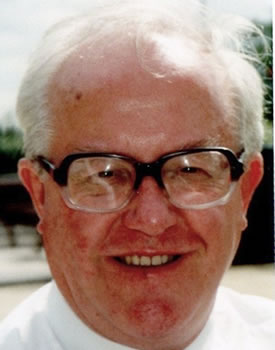John Crookes, 1938-2015
23 June 2015
23 June 2015
We are sorry to report the death of a former colleague, John Crookes, one of the earliest members of staff in Lancaster's Department of Operational Research.
Like many of his generation John Crookes was eager to use his maths degree in practical ways and, after graduating from Balliol College, joined the nascent OR group of the steel company Richard, Thomas & Baldwin in 1960. In 1962, RTB sponsored him take an MSc in OR at Birmingham where he completed a project with Peter Pengilly (later to head up OR in Procter & Gamble). Their project for Wallasey Buses proved very useful and was still cited 15 years later by transport planners. More importantly, John met Ann, who had a summer vacation job at Wallasey Buses, where her father had worked. They married in 1965 and their two children, Nancy and David, were born in 1967 and 1970.
John left RTB in 1964 after doing extensive work in computer simulation, and joined British European Airways, later to become part of BA. There his enthusiasm for computer modelling, especially discrete simulation, deepened.
In 1967 John moved back north to join the developing Department of Operational Research at Lancaster University, which was then led by Professor Mike Simpson. Like all his colleagues of the time, John aimed to develop ideas and theories that would prove of value in practice. He supervised Masters student projects with great energy, working alongside the students to ensure that the sponsoring organisation received benefits from the work.
He was especially well-known for his work in discrete simulation. During 1977-81 he was de facto director of the Lancaster Simulation Centre, funded by SRC (the precursor to EPSRC) where he worked alongside Keith Tocher, then a visiting professor in Mathematics at Lancaster. It was during this period that John’s passion for squeezing as much as possible out of small computers came to the fore, based initially on Apple II and then IBM PC computers. He had visitors from all over the world during that period, and all seemed to leave stimulated and full of ideas to pursue back home. He put much of his energy into supervising PhD students and, with them, produced some ground-breaking work.
In the earlier stages of his career, John was active in the Operational Research Society. He was a member of its Council and its General Purposes Committee, which oversaw the day-to-day work of the Society. He was also Chair of its Publications Committee. At various stages in his career he served on Government Advisory Committees, lending them his rapid insights into difficult technical issues.
From the mid-1980s John unexpectedly found himself in demand in Slovenia, where experts from the Edvard Kardel Universiy of Ljubliana were developing complex models. He made several visits to the group led by Alexandra Kornhauser, a Professor of Chemistry. He especially valued the group’s determination to do work that was of practical value whilst being intellectually challenging. The Slovenian group valued his insights into the development of complex dynamic models, often using meagre computing resources.
John retired from Lancaster in 1995. During his 28 years in the department, university life had changed a great deal. There was an increasing pressure for academic publication, which he found irksome. One of his favourite statements was that his contract required him to do research, and he loved doing so, but it didn’t require him to write about it. This was sad because anyone who worked on research with John soon became aware of his incredible intelligence, his insight and his energy in pursuing ideas. Thankfully, he was happy for others, including his PhD graduates, to take up his ideas and to write about them, giving him suitable acknowledgement.
John was quite a character and there are many stories about his time in Lancaster. One of them relates how we both got into hot water. It was a chilly day and we knew there was a fire alarm practice scheduled. John and I were hunkered up in the computer room where four terminals were linked to a Data General Eclipse. We were both busy, working obsessively to get some programs to work. So, when we heard the fire alarm, we locked the door, closed the curtains and carried on working. Soon we heard footsteps in the corridor and banging on the door. In came the fire officers and duly gave us a strong telling off. Apparently our personnel records were marked thereafter.
John was always a man who pursued interests with energy and enthusiasm. These changed from time to time and included an allotment, cycling, marathon running (he completed the Windermere marathon in 3hr 55m in 1986 despite his non-aerodynamic shape), Rohan clothes and an enormous polytunnel, inside which he could drive his garden tractor. One, thankfully short-lived, enthusiasm that affected his colleagues was a belief that a diet based on onions was especially healthy. Anyone entering his office during that period soon learned to take a deep breath before doing so.
When he retired, he and Ann tended their house, garden and polytunnel in Cockerham, a few miles from the University. He had been diagnosed with Type I diabetes a few years before his retirement. As time took its toll he fell victim to a vascular dementia. In 2014, he and Ann moved to Sheffield, his city of birth, to be near their daughter Nancy. It was in Sheffield that John’s life both started and ended. He is survived by his widow, Ann and their two children, Nancy and David. He will be much missed.
